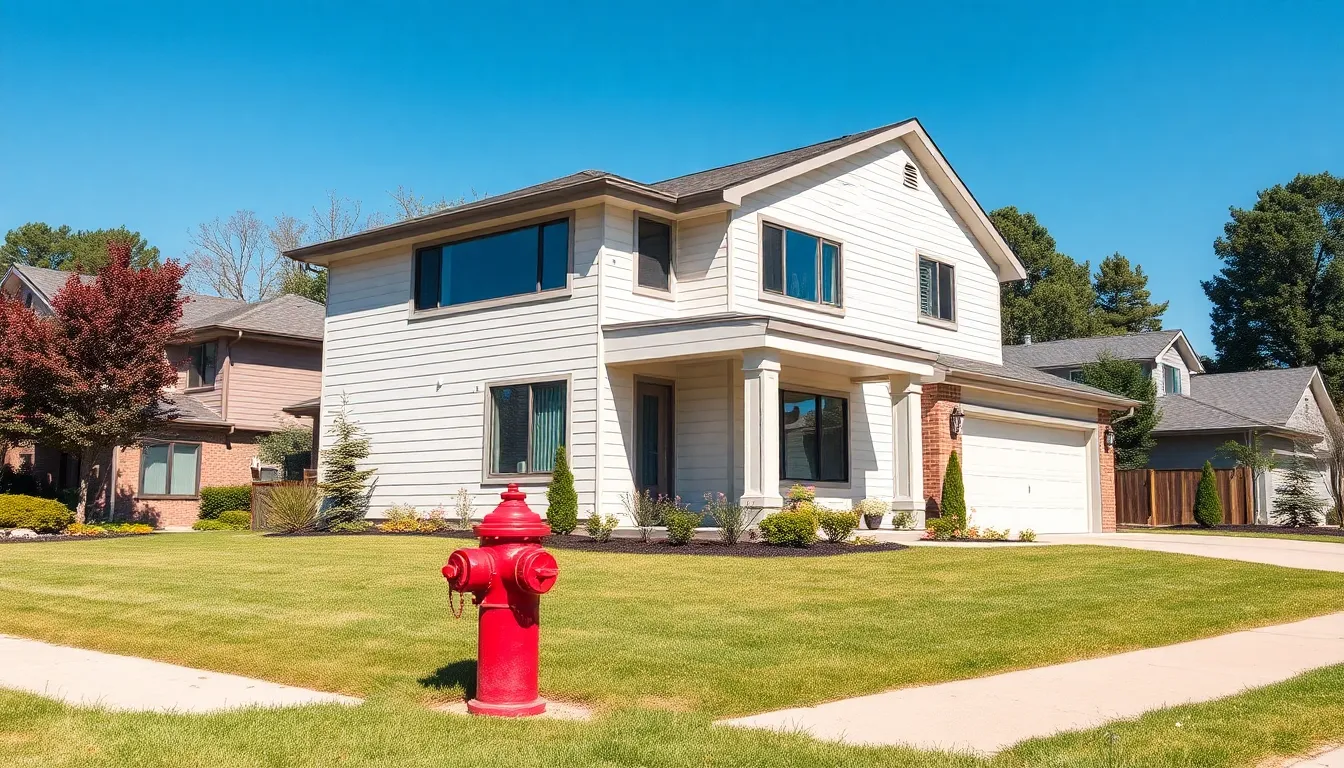Table of Contents
ToggleHome insurance might not be the most thrilling topic, but it’s as essential as a good cup of coffee on a Monday morning. Imagine your home, the fortress where you stash your prized possessions and questionable life choices, suddenly facing a disaster. Without the right insurance, that cozy abode could turn into a financial nightmare faster than you can say “flood damage.”
So, how much should one expect to fork over for this peace of mind? The cost of home insurance can vary widely, influenced by factors like location, home value, and even the color of your front door (okay, maybe not that last one). Understanding these costs is crucial for homeowners who want to protect their investments without breaking the bank. Let’s dive into the nitty-gritty of home insurance costs and uncover how to keep your wallet happy while safeguarding your castle.
Understanding Home Insurance
Home insurance serves as a crucial financial safety net for property owners. This type of insurance covers various risks, including damage from natural disasters, theft, and liability claims. Knowing how these policies function can help homeowners make informed choices.
Different types of coverage exist within home insurance policies. Dwelling coverage protects the structure of the home, while personal property coverage safeguards belongings inside. Additional living expenses coverage assists homeowners in temporary housing if their home is uninhabitable due to covered incidents.
Cost factors significantly influence home insurance pricing. Location directly impacts premiums, with urban areas often commanding higher rates due to increased crime rates and disaster risk. Home value also plays a role; more expensive homes typically incur higher insurance costs because of the greater amount at risk.
Taking measures to reduce costs can lead to significant savings. Homeowners can opt for higher deductibles, which often results in lower monthly premiums. Bundling insurance policies, such as home and auto, frequently yields discounts.
Comparing insurance rates from multiple providers is essential. Homeowners can evaluate coverage options and costs more accurately this way. Understanding the terms and conditions of different policies ensures homeowners choose coverage that aligns with their needs and budgets.
In addition, reviewing policies annually helps homeowners stay informed about changes in coverage and premiums. Keeping an inventory of personal property can aid in claims processes and assist in determining appropriate coverage limits.
Factors Affecting General Cost of Home Insurance

Home insurance costs fluctuate based on several key factors. Homeowners should understand these variables to make informed decisions regarding their coverage.
Location
Location significantly impacts home insurance premiums. Areas prone to natural disasters—like floods or earthquakes—often incur higher costs. Additionally, urban regions may have increased crime rates, which can raise liability coverage expenses. Proximity to fire stations or emergency services can lower rates, providing a direct incentive for homeowners in accessible areas. State regulations also influence pricing, with some states mandating minimum coverage levels. Evaluating local risks helps homeowners anticipate insurance costs.
Home Characteristics
Home characteristics directly affect insurance pricing. Factors like the age of the home and the materials used in construction play a crucial role. Newer homes generally have updated safety features, reducing risk and costs. Conversely, older homes may present higher risks due to outdated plumbing or electrical systems. Additionally, square footage and the presence of swimming pools or other high-risk features can further influence premiums. Homeowners should assess these attributes to gauge their insurance needs accurately.
Coverage Options
Coverage options determine the overall cost of home insurance. Basic policies provide essential coverage, while additional endorsements enhance protection against specific risks. Homeowners can select from various options, including personal property protection, liability coverage, and additional living expenses coverage. Each added layer increases the overall cost. Higher deductible amounts often lead to lower premiums, though they require more out-of-pocket expenses during a claim. Tailoring coverage to fit unique needs ensures adequate protection without overspending.
Average General Cost of Home Insurance
Home insurance costs vary widely based on several factors. On average, homeowners in the United States spend about $1,500 annually for their policies. Understanding regional pricing can help homeowners make informed decisions.
National Averages
National averages indicate that policy costs typically range from $800 to $2,000 per year. Factors influencing this range include home size, location, and local crime rates. States prone to natural disasters, such as hurricanes or wildfires, usually see higher premiums. A homeowner in Texas, for example, might face costs closer to $2,000, while someone in Ohio could spend about $1,000.
State Variations
State variations reveal significant differences in insurance costs. Florida, known for its hurricane risk, averages around $2,500 annually. In contrast, states like Vermont report averages closer to $800. Each state’s risk landscape, regulatory environment, and local insurance market have distinct impacts. For instance, a homeowner in California might pay around $1,200, reflecting the seismic risk in the area. Geographical characteristics shape insurance pricing, making it crucial for homeowners to understand their specific regional costs.
Ways to Reduce Home Insurance Costs
Homeowners can effectively lower their insurance costs through various strategies. Some approaches focus on deliberate adjustments, while others capitalize on available discounts.
Increasing Deductibles
Opting for higher deductibles often leads to lower premium costs. A significant increase can decrease monthly payments considerably, as homeowners accept more upfront financial responsibility in the event of a claim. For instance, choosing a deductible of $2,000 instead of $500 might reduce premiums by up to 25%. Before making this decision, evaluating personal finances is crucial. Higher out-of-pocket expenses during claims could pose challenges. A balance between a comfortable deductible and affordable premiums benefits overall financial planning.
Discounts and Bundling
Insurance providers typically offer discounts that can substantially cut costs. Common discounts include those for installing safety features like alarm systems or for being a claims-free homeowner. Bundling multiple policies, such as auto and home insurance, often results in additional savings. For example, some companies provide up to 20% off premiums when multiple policies are combined. Seeking out these discounts during annual policy reviews increases savings potential. Homeowners should inquire about available offers during their next policy renewal to maximize financial benefits.
Home insurance is an essential investment that protects homeowners from unexpected financial burdens. By understanding the various factors influencing costs and exploring available coverage options, homeowners can make informed decisions that suit their needs.
It’s vital to regularly review policies and seek ways to lower premiums without sacrificing necessary coverage. With the right approach, homeowners can find a balance between adequate protection and affordability. Ultimately, being proactive about home insurance not only safeguards one’s investment but also provides peace of mind in an unpredictable world.







